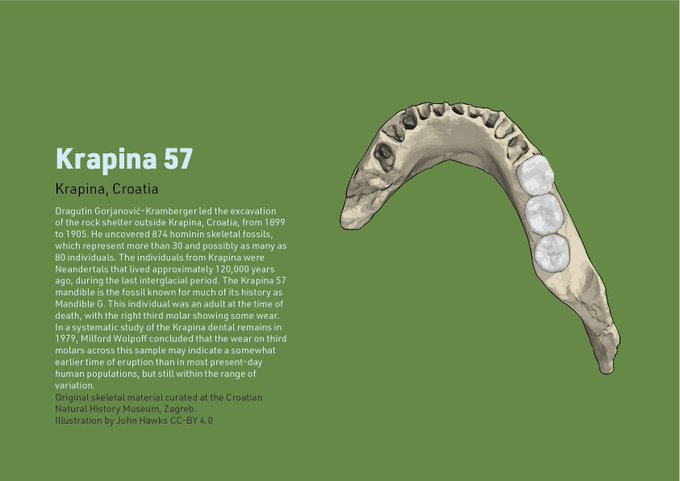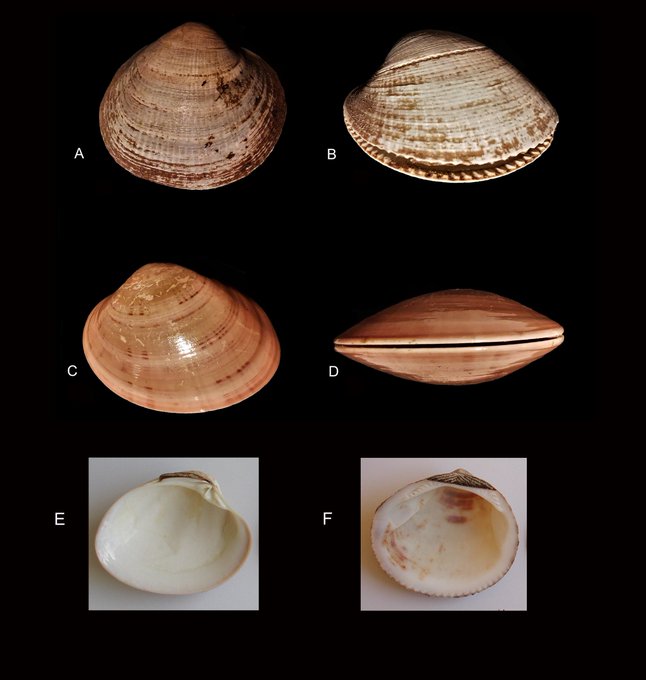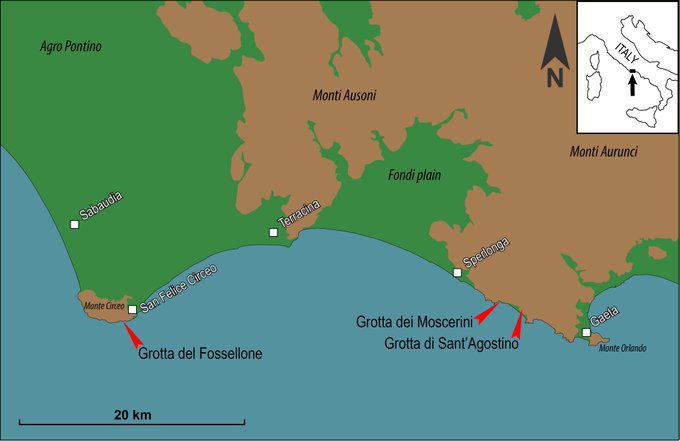NeandertalsのTwitterイラスト検索結果。 21 件
Modern humans generate more brain neurons than #Neandertals: due to the change of a single (!) amino acid, #brainevolution has proceeded differently 😲https://t.co/6C0oHtDeAf #brain #neurobiology @mpicbg @MPI_EVA_Leipzig
Paper: Landscape modification by Last Interglacial Neanderthals https://t.co/bUvFQUCciD
Summary: Neandertals were the first hominids to turn forest into grassland 125,000 years ago https://t.co/0UAa2TTqS7
Brain endocasts of immature Neandertals Engis 2 (left) and Krapina 1 (right). Although brain size of each was within the adult range of variation, similar to humans kids today, they probably still would have had lots of development left #FossilFriday
Why avoid the obvious similarities between these fossils, especially the NR-2 mandible, and Neandertals, particularly Krapina? That relationship is the interesting one, with clear relevance to paleoclimate changes. Nesher Ramla may be a likely Krapina source population.
Aprendre sobre la vida quotidiana dels neandertals és possible gràcies a @espaiorigens. 🔎Explora el passat en família amb les activitats d’aquest centre i coneix els fascinants atractius turístics de la Noguera🌿 a https://t.co/baIaRvbwMu
#FemTerritorideValor #LeaderCAT2020
Recent work by Yolanda Fernández-Jalvo and Peter Andrews found that cranial fractures on the Spy 1 Neandertal skull were the likely cause of death of this #hominin individual. A new dating scheme places the Spy Neandertals between 44,300 and 40,700 years ago. #paleoanthropology
Homo antecessor is a species that occupies a fascinating time and place in human origins. The #hominin material from Gran Dolina are the closest known sister group to the common ancestor of today's people, Neandertals, and Denisovans. #paleoanthropology
The fossils from Caune de l'Arago, France, are around the same age as the large Sima de los Huesos sample of early Neandertals. Whether they represent the same #hominin population is not clear. They test our ability to determine relationships with morphology. #paleoanthropology
The #hominin skeleton from Saint-Césaire, France is one of the last known Neandertals and lived some 42,000-40,000 years ago. The individual suffered but survived, at least for several weeks, a sharp force injury to the head. #paleoanthropology #FossilFriday
The three bones of the Swanscombe #hominin skull were found across 20 years within a gravel layer in the course of the ancient Thames River. The skull belonged to an early relative of Neandertals. #paleoanthropology #sciart
Apidima 1 may be the earliest European #hominin fossil aligned with African ancestors of modern people, more than 210,000 years old. But some specialists suggest it was an ancestor of Neandertals. Of course, it may be both. #paleoanthropology
Recent archaeological work has uncovered the aesthetic cultures of #Neandertals, who sometimes decorated themselves with colors, shells, talons, and feathers, marked and engraved cave walls, and had an ear for language. #Neanderthalthinking
The Steinheim skull has been a puzzle in #paleoanthropology. Today, we know that genetic exchanges with Africa influenced early Neandertals, and #hominin fossils from Apidima, Greece close in age to Steinheim may reflect this mixing. Why not this one too? #FossilFriday
The perils of understanding extinct populations with morphology are front and center with the Arago #hominin sample. Were they early Neandertals, or something else? My guess is a mosaic of drift in ancient Eurasian populations. #paleoanthropology
Was burial of the dead practiced by Neandertals or is it an innovation to our species?
There are indications in favour of the first hypothesis:
Recent evidences of a neanderthal child buried 41000 years ago in Dordogne France: https://t.co/QvF0xQ7TDj
Image: anibal/stock.adobe.com
My talk on the peopling of western Eurasia by Homo #sapiens populations and their interactions with local #Neandertals given at the last #ESHE2020 meeting is now on line via @YouTube : https://t.co/u4CEaIv2iK
Sometime between 370-150,000 years ago Neandertals got a Y chromosome from a more modern-like source population. This ultimately spread throughout all later Neandertal populations from which anyone has sampled DNA.
#15January #January15 #15Gennaio 2020
Neandertals on the beach: Use of marine resources at Grotta dei Moscerini (Latium, Italy)
Villa P. et al. via journals.plos
https://t.co/LLMiQv7QHJ
#Seashells #Archaeology #Paleoanthropology #Neandertal #Neanderthal @FemoraleShells
@KelchTyler Santa Claus/Saint Nicholas = An evolved folk memory of surviving Euroasian Neandertals ~~> Wild People / Wild Men. ~ @CryptoLoren
Endocranial shape Neandertals v. Modern Humans: A=Nea, La Chapelle-aux-Saints, elongated. B=MH, globular. Arrows=enlarged posterior cranial fossa (housing the cerebellum) & bulging of parietal bones in MHs compared to Nea. Source: Gunz et al (2019) https://t.co/TrdnMd91he
































